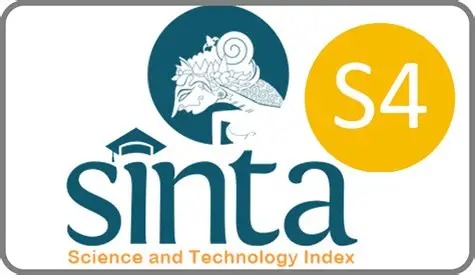DEVELOPMENT OF TEA LOCAL COMPANY THROUGH BLUE OCEAN STRATEGY
DOI:
https://doi.org/10.14421/jiehis.3526Keywords:
Blue ocean strategy, EFAS, IFAS, Marketing Strategy, SWOTAbstract
By the development and ease of today's technology line, it is necessary to design a new marketing strategy to find out the position of EFAS and IFAS, as well as find the right marketing strategy proposal for the company using the Blue Ocean Strategy method. This strategy method offers a concept for companies looking for new areas that have not been entered by competitors. The purpose of this study is to find out and explain the external and internal environment through SWOT analysis, how to apply the Blue Ocean Strategy in increasing sales, and excel in compete so that it can be applied to the smooth running of the business in the future. Based on the results of a study involving 52 respondents, it is known that the company's position is in quadrant III with a value on the X axis of -0.1 and the Y Axis of 0.2, meaning that there is a need for a change in strategy with the opening of existing opportunities. Furthermore, the proposed four-step performance framework, the variables that must be leveled are product quality, advertising, the appearance of the company, the ease of finding products, and promotion, and the variable factors created are the renewal of the company's image (re-branding), and the addition of a narrative to the product menu.
References
Aithal, P. S. (2016). The Concept of Ideal Strategy and Its Realization Using White Ocean Mixed Strategy. International Journal of Management Sciences and Business Research, Vol-5, Issue 4,, 171-179.
Chan, K. W., & Mauborgne, R. (2016). Competing in overcrowded industries is no way to sustain high performance. The real opportunity is to create blue oceans of uncontested market space. Jakarta: Noura Books.
Christos Sigalas, V. M. (2018). Empirical investigation of relationship patterns between competitive advantage and superior performance. Emerald Publishing Limited.
Clauss, T. (2016). Measuring business model innovation: conceptualization,scale development, and proof of performance.
Daniels, P. (2020). Chapter 4: Ecological Economics and the 4th Industrial . In A. (. for, Ecological Economics (p. 83). Melbourne: Haydn Washington.
Heene, A., & Desmidt, S. (2010). Manajemen Strategik Keorganisasian Publik Dialih bahasakan oleh Faisal Aiff. Bandung: Refika Aditama.
Kavadias, T., Ladas, K., & Loch, C. (2016). The Transformative Business Model How to Tell You If You Have One. Boston: HARVARD BUSINESS SCHOOL PUBLISHING CORPORATION.
Keller, K. L., & Kotler, P. (2015). Marketing Management. London: Pierson Publisher.
Kim, W. C., & Mauborgne, R. (2005). Competing in overcrowded industries is no way to sustain high performance. The real opportunity is to create blue oceans of uncontested market space. Harvard Publication .
Kim, W., & Mauborgne. (2005). Competing in overcrowded industries is no way to sustain high performance. The real opportunity is to create blue oceans of uncontested market space. Harvard Business School Publishing Corporation.
S.R.Warner, K. (2019). Building dynamic capabilities for digital transformation: An ongoing process of strategic renewal. Long Range Planing.
Sallah, C. A., & Caesar, L. D. (2020). Journal of Entrepreneurship in Emerging Economies.
Sigala, M. (2018). New technologies in tourism: From multi-disciplinary to anti-disciplinary advances and trajectories. Tourism Management Perspectives, 151-155.
Tekic, Z., & Koroteev, D. (2020). From disruptively digital to proudly analog : A holistic typology of digital. Business Horizon.
Downloads
Published
How to Cite
Issue
Section
License
Copyright (c) 2022 Qurtubi, Akbar Daffa Raharja, Roaida Yanti, Rahma Fariza

This work is licensed under a Creative Commons Attribution-ShareAlike 4.0 International License.
(c) The Author(s). This article is distributed under a Creative Commons Attribution-ShareAlike 4.0 International License.






